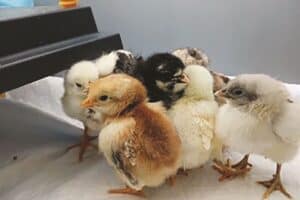Fall is officially here, but there is more than just memories remaining from the summer.
Our garden, for example, is still going strong as of this writing. Tomatoes are ripening. Pumpkins are growing. A new round of radishes is sprouting up. Potatoes are ready to dig up. The kale is still prospering.
Success is certainly not a given in this climate. As the Falcon Garden Club notes on its website: “We are a growing community with some very challenging growing conditions. We are barely a zone 5 and we have wind, rabbits and, of course, hail as soon as the iris bloom.”
To increase our odds of a prosperous garden, we invested a few years ago in a mammoth greenhouse. … The idea was to extend the growing season and to keep the hordes of grasshoppers out. Inside the greenhouse we had four garden beds. The greenhouse did, perhaps, reduce the grasshopper population in the garden, though it hardly kept them all out. And after only a couple of summers, our relentless prairie winds had torn up the north and south sides of the greenhouse.
To increase our odds of a prosperous garden, we invested a few years ago in a mammoth greenhouse. (The three hours it was supposed to take to set it all up actually took more like three days.) The idea was to extend the growing season and to keep the hordes of grasshoppers out. Inside the greenhouse we had four garden beds.
The greenhouse did, perhaps, reduce the grasshopper population in the garden, though it hardly kept them all out. And after only a couple of summers, our relentless prairie winds had torn up the north and south sides of the greenhouse.
So this summer, we tried something new. I took the existing garden beds and built frames around them that held hail netting on top and on the sides. That served two purposes: It protected against hail, of course, but also ended up doing a better job of keeping grasshoppers at bay than the greenhouse ever did. As a bonus, it prevented the chickens that keep jumping out of their pen into the yard from attacking the young vegetation. That, combined with rich, well-rotted cow manure that my wife, Margaret, got from a guy in Black Forest, made for a banner garden season.
The spring rains probably helped, too. In another part of the yard we have an always expanding field of Russian sage, and it has never blossomed as early, or as long, as it has this year with the aid of those rains. The Russian sage was joined by a glorious field of sunflowers. We didn’t plant them; they came courtesy of the sunflower seeds from the birdseed that our feathered friends scattered about around the bird feeder.
The rain was not a friend to Penny Taylor, who responded to a query I posted on Nextdoor, the online community hub.
“I had a garden but didn’t have a ton of time to dedicate to it, so it was less abundant than it may have been,” she wrote, “but we got a bunch of zucchini, tomatoes, rhubarb, spaghetti squash, green beans and lots of different herbs. I did have to plant most things twice due to our soggy June we had, which drowned all the original seeds. And I had to replant my tomatoes because the day I put the first plants in the ground we got a terrible hailstorm at 1 a.m. Fortunately I had extra.”
“Oh boy, did I grow a garden!” posted another neighbor, Linda Botkin. “Sweet corn, green beans, peas, carrots, onion, cucumbers, potatoes, peppers, squash, zucchini, tomatoes and pumpkin! The tomatoes were the only thing that did not do as well.”
For the record, in addition to the tomatoes, pumpkins, radishes, potatoes and kale I mentioned above, we also grew leeks, onions, cucumbers, green peppers, chives and a bunch of stuff I don’t know what it is because our son planted it. We also had a bumper crop of buzz buttons, also known as electric daisies
“Native to warm, tropical regions, buzz buttons are an herbaceous perennial in the daisy family that have been used for medicinal and culinary purposes for centuries,” according to AeroGarden.com. “Low-growing with gorgeous green foliage and covered in an abundance of stiff, button-like flowers, their small stature hides a big culinary kick. In a nod to their namesake, buzz buttons create a numbing, tingling, effervescent sensation in your mouth when you eat them.”
You can also, the site noted, suck on the buzz button flowers “like a lollipop to relieve tooth and mouth pain.” Flowersyoucaneat.com explains that the buzz buttons contain spilanthol, which has anti-inflammatory properties “and is a natural analgesic and anti-bacterial compound. … The flowers can be added to salads, stir fries, sushi, pasta and soups as well as sprinkled over ice cream, sorbets and chocolate desserts.”
The Gazette recently had an article on Bloom Ultra Lounge, a downtown Colorado Springs bar and restaurant that serves buzz buttons as a garnish with one of its floral-themed drinks. Maybe we can become Bloom’s buzz button provider!







